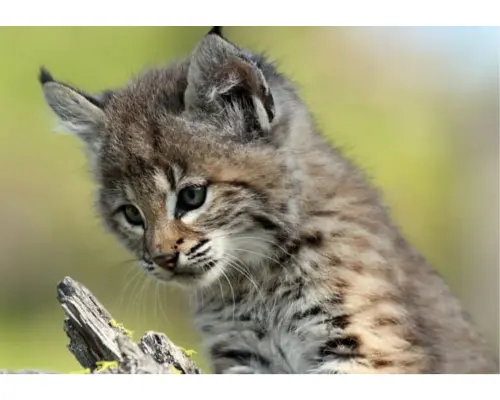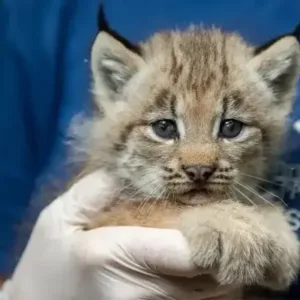The Canada lynx (Lynx canadensis), or Canadian lynx, is a medium-sized North American lynx whose range extends over Alaska, Canada and the northern parts of the contiguous United States. It is characterized by its long, dense fur, triangular ears with black tufts at the tips, and broad, snowshoe-like legs. Its hind legs are longer than its front legs, so that its back slopes forward. The Canada lynx measures 19 to 22 inches at the shoulder and weighs between 5 and 17 kg. The lynx is a good swimmer and an agile climber. The Canada lynx was first described by Robert Kerr in 1792. Three subspecies have been proposed, but their validity is in doubt; it is generally considered a monotypic species.
A specialized predator, the Canada lynx relies heavily on the snowshoe hare (Lepus americanus) for food. This leads to a prey-predator cycle, with Canada lynx responding to cyclical increases and decreases in snowshoe hare populations over the years in Alaska and central Canada. The Canada lynx population increases as the hare population increases; if the hare population decreases in a given area, the lynx will move to areas where there are more hares and fewer offspring. The Canada lynx hunts primarily at dusk, or at night, when snowshoe hares tend to be active. The lynx waits for the hare on specific trails or in “ambush beds”, then pounces on it and kills it by biting it on the head, throat or neck. Individuals, especially those of the same sex, tend to avoid each other, forming “intrasexual” territories. The mating season lasts about a month (March to early April). After a gestation period of two to three months, a litter of one to eight kittens is born. The young are weaned at 12 weeks.
This lynx is mostly found in dense boreal forests, and its range coincides strongly with that of the snowshoe hare. Due to its abundance throughout its range and lack of serious threats, the Canada lynx has been classified as “Least Concern” on the IUCN Red List. This lynx is regularly trapped for the international fur trade in most of Alaska and Canada, but is protected in the southern half of its range due to threats such as habitat loss.




















